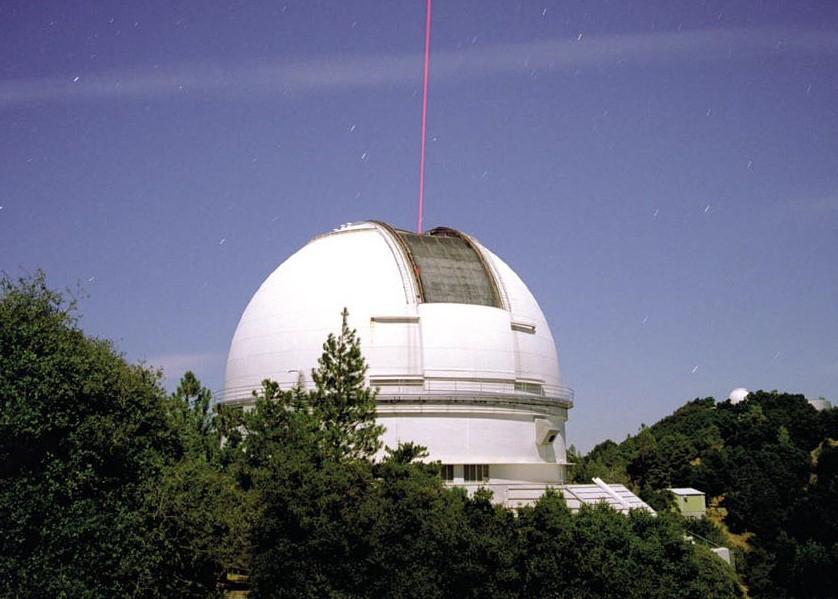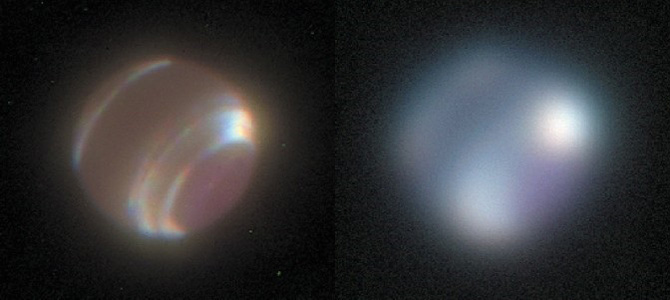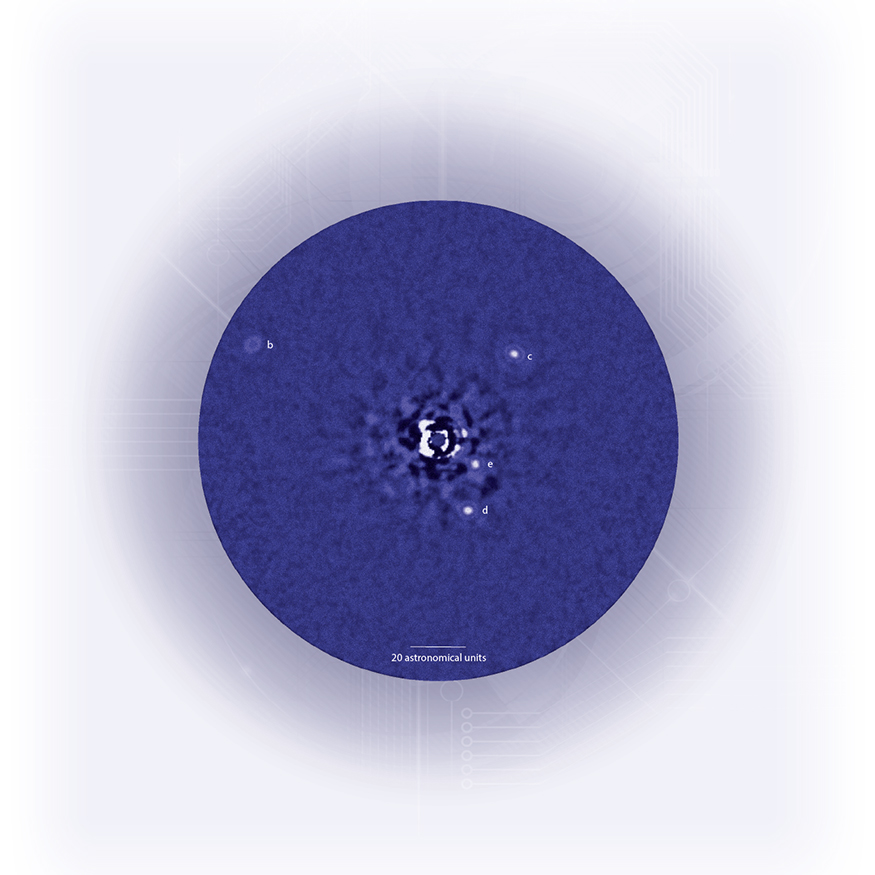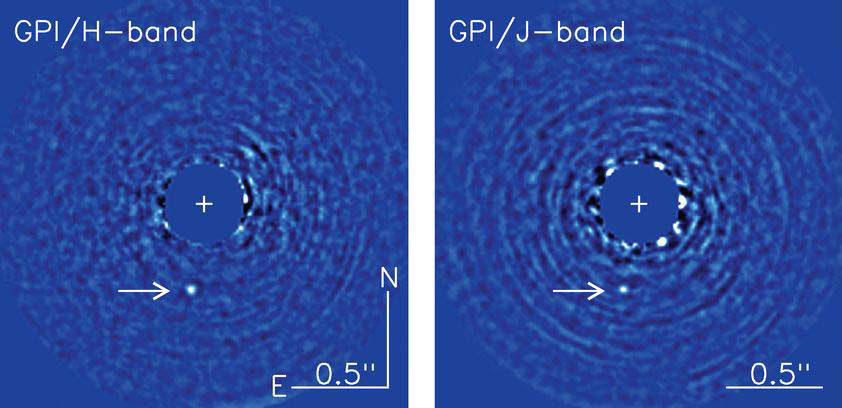Foundations: Adaptive optics
For over 25 years, Lawrence Livermore researchers and collaborators have developed and applied innovative adaptive optics technologies used for ground-breaking science.
Since their invention, ground-based telescopes have suffered from blurred images caused by Earth’s fast-moving and turbulent atmosphere. However, advances in optics and computer technology made it possible to sharply reduce this blurring using adaptive optics (AO), which correct atmospheric distortions and allow ground-based telescopes to reach their full potential for high-resolution, high-contrast observations of exoplanets, debris disks, galaxies, and stars.
Generally, AO technology uses a wavefront control system, which measures distortions due to atmospheric turbulence using light from a guide star. A control computer calculates the wavefront distortion up to a thousand times a second and sends commands to a deformable mirror. The commands adjust the surface of the mirror, where hundreds to a few thousand actuators adjust the surface height of the optic by only hundreds of nanometers.
Early AO systems required astronomers to find a bright star as a reference point of light; however, less than 1 percent of the sky contains stars sufficiently bright to be of use as a reference light. In the early 1990s, Livermore scientists extended the usefulness of adaptive optics by pioneering the application of a laser guide star system, which created a virtual reference star high above Earth’s surface. The system could be mounted on a telescope and directed into virtually any part of the sky an astronomer wants to study.
Pioneering clearer imaging
In 1995, Livermore installed a laser guide star on the 3-meter Shane telescope at the University of California’s Lick Observatory. The Shane became the first major astronomical telescope to use an artificial guide star system with full adaptive optics. The system was then used as the prototype for one at the 10-meter Keck II telescope in Hawaii. In the joint Livermore–Keck project, Livermore researchers developed the laser and high-speed wavefront control systems. The virtual guide star achieved “first light” on December 23, 2001.
Astronomers reported exceptional results from the adaptive optics systems installed at the two observatories, and the systems laid the foundation for new discoveries. The images from both systems have shed new light on the formation of stars and galaxies, revealed unexpected features on planets and moons in our solar system, and yielded new information on black holes in the centers of distant galaxies. Andrea Ghez’s work at Keck tracked the orbits of stars around the Milky Way’s supermassive black hole, leading to her Nobel Prize.
Direct imaging of worlds beyond our solar system
The discovery of exoplanets was an historic breakthrough in modern astronomy. Prior to the late 2000s, planet detection techniques had been used to find exoplanets, but the methods all had limitations. Most inferred the existence of a planet through its influence on the star that it orbits, and the techniques were all limited to small-to-moderate planet–star separation, usually less than 5 astronomical units.
Livermore scientists pioneered the direct imaging of exoplanets by further developing and applying adaptive optics technology. In 2008, Livermore scientists and colleagues used the Keck and Gemini telescopes to take the first images of a multi-planet solar system orbiting another star. The three planets observed were 24, 37, and 67 astronomical units from the star HR8799. These observations required not only a coronagraph to block the central star’s light, but also extremely precise wavefront control. A Livermore-developed advanced computer processing technique helped to extract the signals from the planets from the vastly brighter light of the star. This discovery was a noteworthy achievement covered on the front page of the New York Times.
Extending the search for extrasolar planets
Leveraging these previous innovations, a Livermore-led team constructed a new instrument—the Gemini Planet Imager (GPI)—designed from the beginning to block the light of bright stars using a coronagraph and reveal even fainter planets. GPI provided significantly higher contrast than previous general-purpose systems through the use of new technologies, including a silicon microelectromechanical system (MEMS) deformable mirror (developed by Boston Micromachines) as well as advanced wavefront sensing and control techniques.
After nearly a decade of development, construction, and testing, GPI was deployed in 2013 at the 8-meter Gemini South telescope in Chile. Since then, the GPI Exoplanet Survey science team, which includes Livermore researchers, has observed more than 500 nearby stars and discovered or characterized six exoplanets. The most notable exoplanet was 51 Eridani b, a Jupiter-like planet in a young star system that has helped further understanding of how planets formed around our sun. The instrument’s polarimetry mode has also mapped belts of cometary debris around more than 20 stars.
Today, Livermore researchers are building on these foundations to continue improving adaptive optics technology and conducting revolutionary exoplanet science.
Key dates
1995
Team installs laser guide star on Shane telescope
2001
Laser guide star adaptive optics system at Keck II achieves first light
2008
Livermore scientists discover three planets orbiting the star HR8799
2015
LLNL scientists and international team discover exoplanet 51 Eridani b
Image gallery
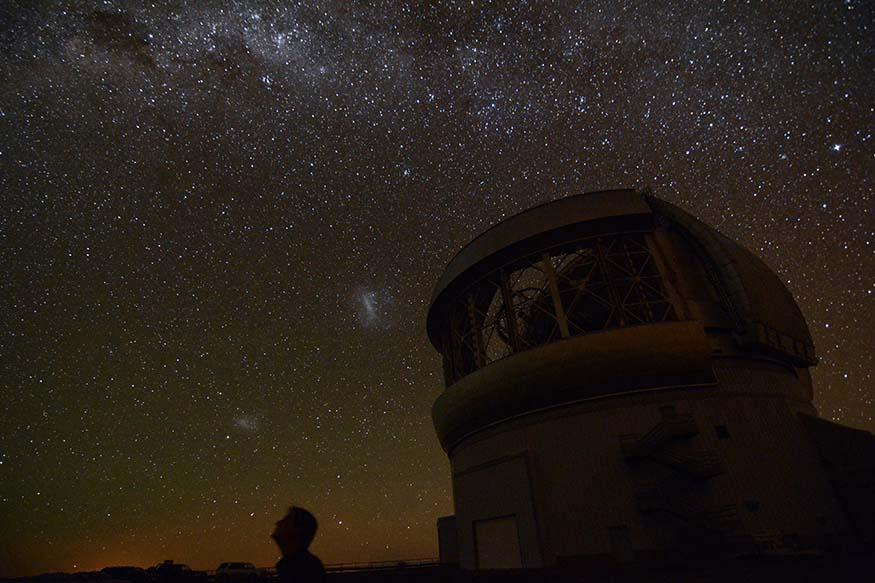

The Gemini South telescope in Chile as imaged by members of the Gemini Planet Imager team during commissioning. Credit: Marshall Perrin, Space Telescope Science Institute
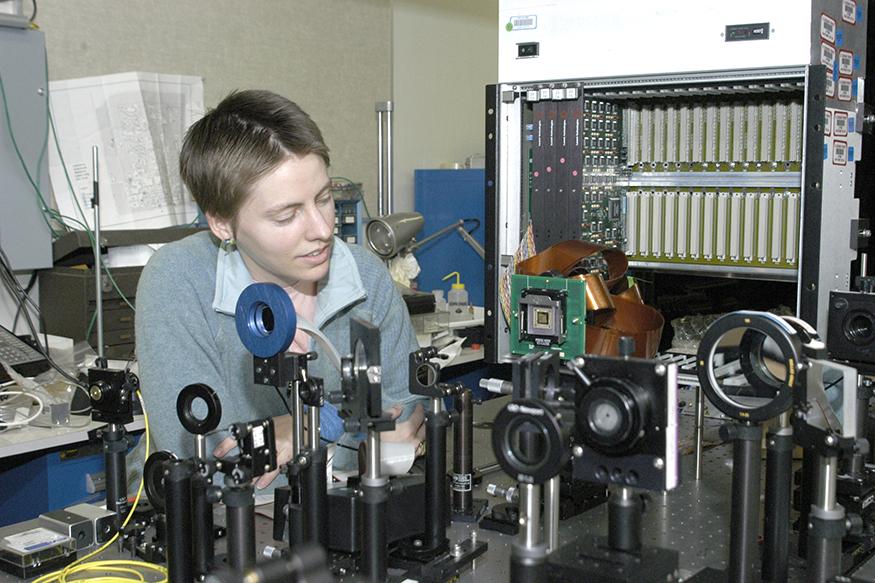

LLNL engineer Lisa Poyneer with a prototype of the GPI MEMS mirror (micro electrical mechanical system) (center of the wafer surrounded by a green circuit board). GPI’s MEMS mirror, developed by Boston Micromachines, was a key enabler of high-order correction while still having a very small form factor.
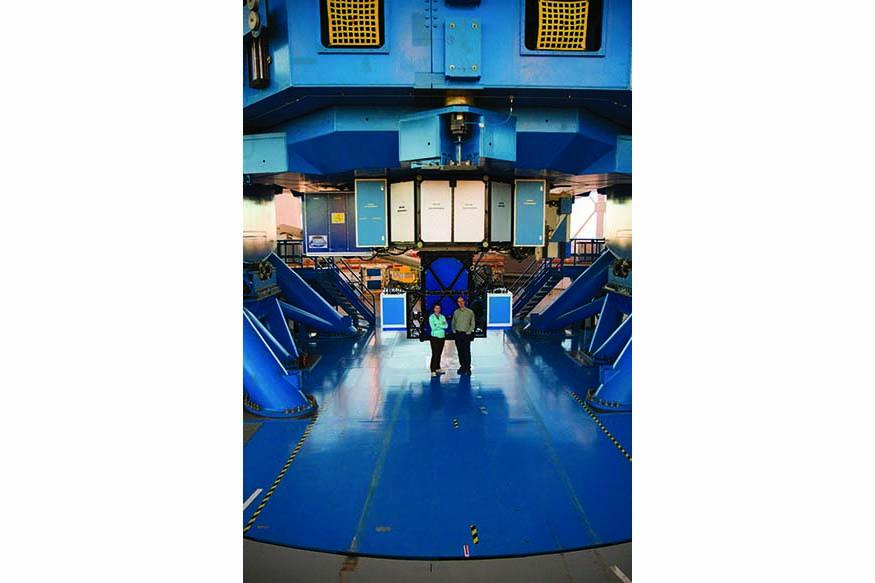

Video gallery
The HR 8799 system harbors four super-Jupiters orbiting with periods that range from decades to centuries. HR 8799e is the innermost planet in this video. Credit: Jason Wang (Caltech)/Christian Marois (NRC Herzberg)
β Pic b's orbit is just one degree from being perfectly edge-on to us. In this movie, we see the planet pass behind the coronagraph mask (black circle) that is blocking out the star, barely miss passing in front of its star, and reppear on the other side. Credit: Jason Wang (Caltech)/Gemini Planet Imager Exoplanet Survey
The planet Fomalhaut b (indicated with the white arrow) is in orbit around its star, which harbors a large ring of rocky debris (analogous to our own Kuiper belt). Credit: Jason Wang/Paul Kalas (UC Berkeley)
The footage uses 5 images taken over 4 years using the Gemini Planet Imager. In these 4 years, the planet is curving into the star, allowing us to see the gravitational pull of the star on this exoplanet. Credit: Jason Wang (Caltech)/Gemini Planet Imager Exoplanet Survey
Select publications
Performance of the Gemini Planet Imager’s adaptive optics system | Applied Optics, 2016
L.A. Poyneer, D.W. Palmer, B. Macintosh, D. Savransky, N. Sadakuni, S. Thomas, J.-P. Véran, K.B. Follette, A.Z. Greenbaum, S.M. Ammons, V.P. Bailey, B. Bauman, A. Cardwell, D. Dillon, D. Gavel, M. Hartung, P. Hibon, M.D. Perrin, F.T. Rantakyrö, A. Sivaramakrishnan, J.J. Wang
Discovery and spectroscopy of the young jovian planet 51 Eri b with the Gemini Planet Imager | Science, 2015
B. Macintosh et al
Detection of Carbon Monoxide and Water Absorption Lines in an Exoplanet Atmosphere | Science, 2013
Q.M. Konopacky, T.S. Barman, B.A. Macintosh, C. Marois
Direct Imaging of Multiple Planets Orbiting the Star HR 8799 | Science, 2008
C. Marois, B. Macintosh, T. Barman, B. Zuckerman, I. Song, J. Patience, D. Lafrenière, R. Doyon
Multi-watt 589 nm fiber laser source | Proc. SPIE, 2006
J.W. Dawson, A.D. Drobshoff, R.J. Beach, M.J. Messerly, S.A. Payne, A. Brown, D.M. Pennington, D.J. Bamford, S.J. Sharpe, D.J. Cook
Cloud Structures on Neptune Observed with Keck Telescope Adaptive Optics | Astronomical Journal, 2003
C.E. Max, B.A. Macintosh, S. G. Gibbard, D. T. Gavel, H. G. Roe, I. de Pater, A.M. Ghez, D.S. Acton, O. Lai, P. Stomski, P.L. Wizinowich
Image Improvement from a Sodium-Layer Laser Guide Star Adaptive Optics System | Science, 1997
C.E. Max, S.S. Olivier, H.W. Friedman, J. An, K. Avicola, B.V. Beeman, H.D. Bissinger, J.M. Brase, G.V. Erbert, D.T. Gavel, K. Kanz, M.C. Liu, B. Macintosh, K.P. Neeb, J. Patience, K.E. Waltjen

